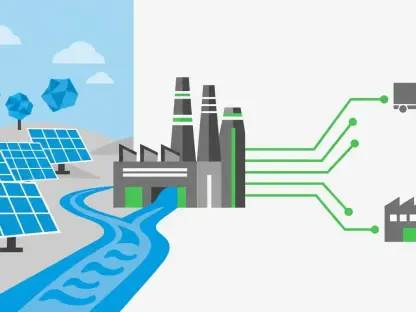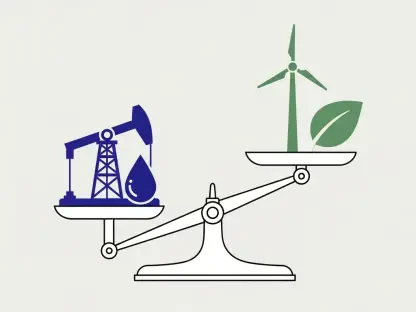In a bid to revolutionize the very foundation of America’s roadways, the innovative startup Solar Roadways, founded by Scott and Julie Brusaw, champions a bold vision to transform traditional roads into solar power generators. The project’s potential is epitomized by the trial on a section of Route 66 in Missouri, marking a significant step forward following initial installations in Sandpoint, Idaho, and a Missouri welcome center. The financial magnitude is considerable, with an estimated cost of $56 trillion, yet the promise of creating self-sustaining roads that generate revenue drives the ambition forward.
Breaking Down the Technology
The Hexagonal Design
Central to Solar Roadways’ concept is the use of transparent hexagonal solar panels made from robust glass. The hexagonal design offers a practical advantage, providing a tighter fit and thereby maximizing surface coverage. These panels can withstand the weight and pressure of vehicles and require minimal maintenance compared to traditional asphalt. The transparent glass permits sunlight to penetrate and be converted into usable energy while maintaining durability. This technological implementation signifies a shift toward multifunctional infrastructure, blending durability with energy efficiency.
Moreover, these panels are equipped with integrated LED road markings that illuminate pathways, enhancing nighttime visibility and safety. The LED lights can be programmed to display lines, symbols, and signals directly on the road surface, increasing the flexibility and adaptability of road markings. This adaptability could revolutionize traffic management, making streets more dynamic and responsive to changing conditions. Additionally, the integration of heaters within the panels to melt ice and snow is designed to improve safety in colder climates, reducing accidents and maintenance costs related to winter weather conditions.
Powering Communities
Perhaps one of the most compelling aspects of this project is its potential to connect to the power grid, thereby supplying electricity to nearby homes and businesses. The solar roadways would not only serve as transportation conduits but also as power stations generating renewable energy. This integration could pave the way for decentralized energy systems, where localized power generation reduces reliance on large, centralized power plants and lengthy transmission lines. It could also translate into economic benefits by generating additional revenue streams from surplus electricity sold back to the grid.
Tom Blair, an engineer with the Missouri Department of Transportation (MoDOT), emphasized that the project could create new revenue opportunities. The ability to sell excess electricity could render solar roadways self-sustaining over time, potentially offsetting the high initial investment. Furthermore, this aspect aligns with growing efforts to increase renewable energy adoption, decarbonize power generation, and address climate change. Even amid inquiries into the feasibility and cost-effectiveness of such an expansive infrastructure overhaul, the potential benefits remain highly attractive.
Feasibility and Challenges
High Costs and Extensive Labor
The substantial financial requirement of $56 trillion brings into sharp focus the challenges of implementing solar roadways across America. The massive investment needed is a significant barrier that will need extensive financial planning, government support, and possibly private sector collaboration to overcome. Labor costs and the intricate nature of retrofitting existing road infrastructures add layers of complexity to an already ambitious project. Critics argue that the astronomical costs and time required for such a transition might be better allocated toward other renewable energy initiatives.
Additionally, the question of longevity and wear and tear of glass panels remains, given the daily exposure to various weather conditions and constant heavy vehicular traffic. Addressing these concerns will be crucial for gaining broader support and ensuring long-term viability. While initial pilot projects show promise, scaling up to cover the extensive network of America’s roadways poses a daunting challenge, requiring clear, phased approaches to implementation.
Practical Applications in New Infrastructure
An alternative, more strategic approach may lie in integrating solar roadways into newly developed city infrastructures rather than attempting to retrofit existing ones. Newly planned urban areas and residential developments could incorporate solar road technology from the ground up, ensuring that systems are optimized for efficiency and cost-effectiveness from the start. This method could present a more manageable path forward, potentially serving as a model for future urban planning that prioritizes renewable energy.
Moreover, considering the rapid evolution in solar technology and ongoing advancements in material science, continuous improvements could address early limitations. Technological breakthroughs could enhance the efficiency, durability, and cost-effectiveness of solar panels, making them more applicable for a broader range of environments and applications. The benefits of integrating solar roadways in new city projects could demonstrate practical outcomes and build support for expanded use.
Looking Forward
Global Renewable Shift
The vision behind Solar Roadways is aligned with a global shift towards renewable energy, emphasizing the significance of innovation in combating climate change. The growing adoption of solar energy worldwide signals a movement toward cleaner and more sustainable energy solutions, with countries investing heavily in solar infrastructure. This broader trend reinforces the potential for solar roadways to play a role in future smart city designs and renewable energy strategies.
Despite the skepticism and high upfront costs, the idea of turning the nation’s roadways into sprawling solar panels remains a testament to the innovative spirit that drives technological progress. The ongoing advancements in solar panel technology and energy efficiency suggest that what seems far-fetched today could become feasible in the near future. Pilot projects and smaller scale implementations will serve as critical testing grounds to refine the concepts and prove the viability of integrating solar roadways into mainstream infrastructure.
Conclusion
In an effort to fundamentally transform America’s road infrastructure, the groundbreaking startup Solar Roadways, founded by Scott and Julie Brusaw, envisions converting conventional roads into solar energy producers. This ambitious project aims to integrate solar panels into road surfaces, thus turning highways into vast energy farms. A key milestone in this vision was the pilot project on a segment of Route 66 in Missouri, forming a significant advancement after initial trials in Sandpoint, Idaho, and another at a Missouri welcome center. The financial scale of this undertaking is enormous, amounting to an estimated $56 trillion. Despite this staggering cost, the goal of creating self-sustaining, revenue-generating roadways propels the project forward. The innovation suggests a future where asphalt is infused with solar technology, potentially revolutionizing energy consumption and generation nationwide. Solar Roadways’ vision, while costly, promises an era where infrastructure not only supports but also powers communities across the country.









